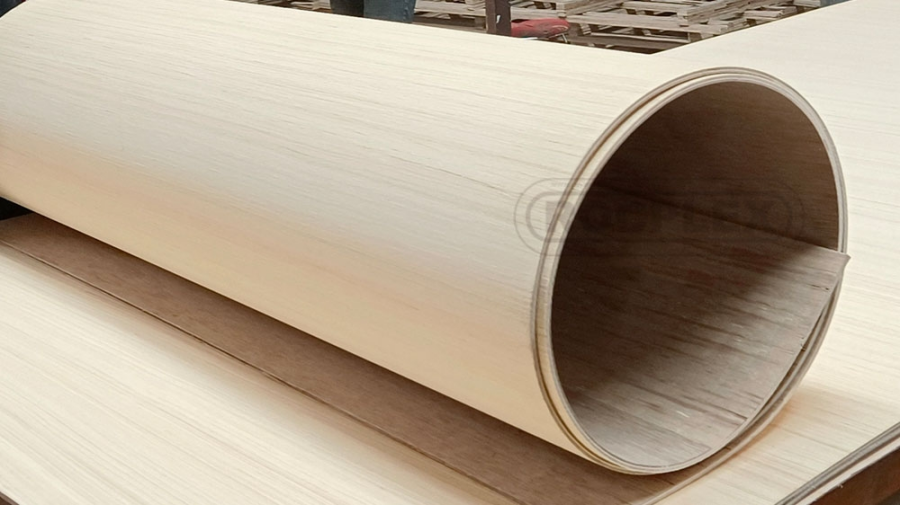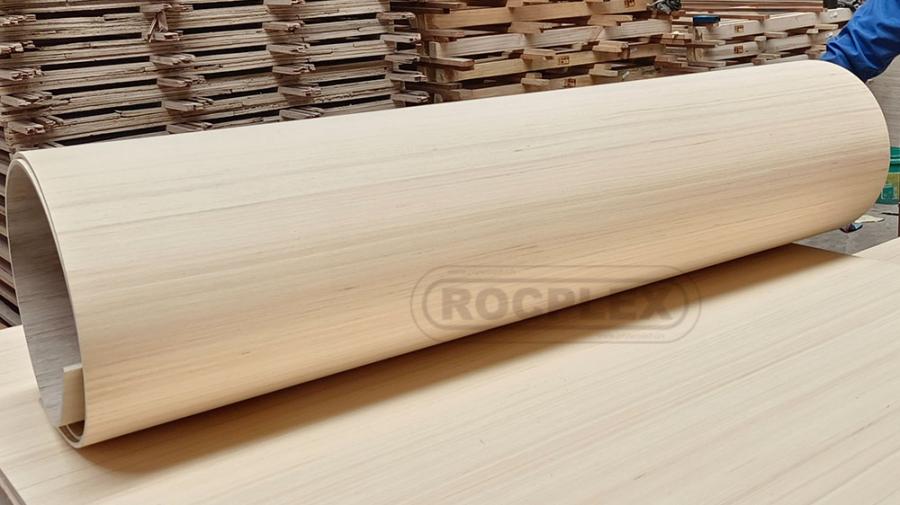Industrial design is all about pushing the boundaries of creativity and innovation. It’s about finding new ways to shape the world around us, making products that are not only functional but also aesthetically pleasing. In the pursuit of these goals, materials play a crucial role, and one such material that has been gaining traction among industrial designers is bendable plywood.
What is Bendable Plywood?
1. Defining Bendable Plywood
Bendable plywood, as the name suggests, is a type of plywood that possesses the remarkable ability to bend and conform to various shapes and curves. Unlike traditional plywood, which is rigid and flat, bendable plywood is flexible, making it an excellent choice for projects that require curved surfaces.
2. Manufacturing Process
Bendable plywood is typically made from thin layers of wood veneer, which are glued together with the grain orientation alternating between layers. This alternating grain pattern allows the plywood to flex without breaking. The plywood is then subjected to heat and pressure during the manufacturing process to enhance its flexibility.
3. Common Applications in Industrial Design
Bendable plywood finds applications in a wide range of industrial design projects. It is often used to create curved furniture, architectural elements, and custom components. Its ability to adapt to complex shapes makes it an ideal choice for designers looking to push the boundaries of traditional design constraints.
Benefits of Bendable Plywood for Industrial Designers
1. Flexibility and Versatility
One of the most significant advantages of bendable plywood is its flexibility and versatility. Designers can achieve curves and shapes that were once thought impossible with conventional materials. This flexibility opens up a world of design possibilities, allowing for innovative and eye-catching creations.
2. Complex Shapes and Curves
Industrial designers are constantly seeking ways to differentiate their projects. Bendable plywood enables the creation of intricate and unique designs with ease. Whether it’s creating sinuous chair backs or gracefully curved architectural features, bendable plywood provides the necessary flexibility to turn design concepts into reality.
3. Cost-Effectiveness
Compared to some alternative materials used for curved designs, such as laminated veneer lumber (LVL) or solid wood, bendable plywood offers a cost-effective solution. It allows designers to achieve similar results at a fraction of the cost, making it an attractive option for both large-scale commercial projects and smaller custom designs.
Creative Applications of Bendable Plywood
1. Real-World Examples
To truly appreciate the creative potential of bendable plywood, one need only look at real-world examples. From elegantly curved chairs and tables to stunning architectural installations, bendable plywood has been used to create functional and visually appealing designs across various industries.
2. Aesthetically Pleasing and Functional Designs
Bendable plywood’s unique properties allow designers to combine aesthetics with functionality seamlessly. Whether it’s designing a sculptural piece of furniture or crafting an ergonomic chair that conforms to the body’s curves, bendable plywood can bring both form and function to life.
3. Suitability for Furniture, Fixtures, and Custom Components
Bendable plywood is not limited to any specific category of design. It can be used to create furniture pieces, lighting fixtures, retail displays, and custom components for interiors and exteriors. Its adaptability makes it a valuable tool for designers working on diverse projects.

Tips for Working with Bendable Plywood
1. Handling and Shaping
When working with bendable plywood, it’s essential to handle it carefully to avoid damage. Always store it flat and protected from moisture to maintain its flexibility. When it comes to shaping, using a form or mold is often necessary to achieve precise curves. Patience and precision are key in the bending process.
2. Essential Tools and Techniques
Having the right tools is crucial when working with bendable plywood. This includes clamps, adhesives, and cutting tools that are suitable for woodworking. Additionally, understanding the bending process and the limits of the material is essential to avoid structural issues in your projects.
3. Achieving the Best Results
To achieve the best results with bendable plywood, it’s advisable to start with smaller projects and gain experience before tackling larger and more complex designs. Experiment with different forms and molds to understand how the material behaves and how to achieve the desired curvature.
4. Sourcing Bendable Plywood
When it comes to incorporating bendable plywood into your industrial design projects, sourcing the right materials is crucial. In this section, we will explore how to obtain bendable plywood, recommend sources for procurement, and discuss the factors to consider when selecting the right supplier. Additionally, we’ll emphasize the importance of quality and sustainability in your material choices.
Recommending Sources for Bendable Plywood
1. Local Wood Suppliers: Start your search by looking for local wood suppliers or lumberyards that carry bendable plywood. They often have a variety of wood materials, including bendable plywood, readily available.
2. Specialized Plywood Suppliers: Some suppliers specialize in plywood products, and they may have a broader selection of bendable plywood options. These suppliers are a valuable resource for finding unique and high-quality materials.
3. Online Retailers: Many online retailers offer a wide range of plywood products, including bendable plywood. Websites like Amazon, Home Depot, and specialty woodworking stores can provide convenient access to this material.
4. Wholesale Options: Consider buying in bulk from wholesale distributors or manufacturers like Xuzhou ROC International Trading Co., Ltd. (ROC). Wholesale options can be cost-effective for large-scale projects and ensure a consistent supply of high-quality bendable plywood.
Factors to Consider When Selecting a Supplier
1. Quality: Always prioritize quality when choosing a supplier. Look for plywood that is manufactured to high standards, ensuring it maintains its flexibility and structural integrity during bending.
2. Sustainability: Sustainability is an increasingly important consideration for designers. Select suppliers who source their materials responsibly and adhere to sustainable forestry practices to minimize the environmental impact.
3. Variety: Opt for suppliers who offer a variety of bendable plywood options in terms of thickness, veneer type, and core material. This allows you to select the most suitable option for your specific project requirements.
4. Reputation and Reviews: Research the reputation of potential suppliers and read customer reviews. A supplier with positive feedback from other designers and builders is more likely to provide reliable products and services.
Case Studies — Successful Industrial Design Projects with Bendable Plywood
To illustrate the practical applications and creative potential of bendable plywood, let’s delve into a few case studies of successful projects that utilized this remarkable material.
Case Study 1: Curved Seating Design
1. Design Challenge: The project involved creating a unique and comfortable curved seating arrangement for a modern restaurant.
2. Solution: Bendable plywood was used to craft the curvilinear seating. The flexibility of the material allowed for the seamless integration of the seating into the restaurant’s interior, conforming to the space’s aesthetics.
3. Outcome: The use of bendable plywood not only provided a visually stunning design but also ensured the seating was ergonomically sound and comfortable, enhancing the overall dining experience.
Case Study 2: Curved Architectural Panels
1. Design Challenge: A high-end retail store required curved architectural panels for its storefront to create a distinctive and inviting entrance.
2. Solution: Bendable plywood was employed to construct the curved panels. The material allowed for precise shaping and curvature, achieving the desired visual impact.
3. Outcome: The use of bendable plywood added an element of sophistication to the retail store’s facade, attracting more customers and setting the business apart from competitors.

Conclusion
Bendable plywood is a versatile and cost-effective material that empowers industrial designers to push the boundaries of creativity. Its unique properties make it an excellent choice for achieving complex shapes and curves in a wide range of projects. Whether you’re designing furniture, architectural elements, or custom components, bendable plywood can be a game-changer in your quest for innovative and aesthetically pleasing designs. Embrace the creative freedom it offers and watch your industrial design projects come to life in ways you never thought possible.
Post time: 11 月-16-2023

